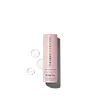What's inside
What's inside
 Key Ingredients
Key Ingredients

 Benefits
Benefits

 Concerns
Concerns

No concerns
 Ingredients Side-by-side
Ingredients Side-by-side

Water
Skin ConditioningGlycerin
HumectantPentylene Glycol
Skin ConditioningSodium Hyaluronate
HumectantBetaine
HumectantHydrolyzed Wheat Protein
Skin ConditioningOligopeptide-78
Skin ConditioningPalmitoyl Decapeptide-21
Skin ConditioningZinc Palmitoyl Nonapeptide-14
Skin ConditioningHexapeptide-9
Skin ConditioningDecapeptide-21
Skin ConditioningOligopeptide-1
Skin ConditioningXylitylglucoside
HumectantAnhydroxylitol
HumectantXylitol
HumectantSucrose
HumectantPlankton Extract
Skin ConditioningGlucose
HumectantLecithin
EmollientButylene Glycol
HumectantHydroxyacetophenone
AntioxidantSodium Hydroxide
BufferingWater, Glycerin, Pentylene Glycol, Sodium Hyaluronate, Betaine, Hydrolyzed Wheat Protein, Oligopeptide-78, Palmitoyl Decapeptide-21, Zinc Palmitoyl Nonapeptide-14, Hexapeptide-9, Decapeptide-21, Oligopeptide-1, Xylitylglucoside, Anhydroxylitol, Xylitol, Sucrose, Plankton Extract, Glucose, Lecithin, Butylene Glycol, Hydroxyacetophenone, Sodium Hydroxide
Water
Skin ConditioningCetearyl Alcohol
EmollientGlycerin
HumectantButyrospermum Parkii Butter
Skin ConditioningC12-15 Alkyl Benzoate
AntimicrobialNiacinamide
SmoothingVitis Vinifera Oil
PerfumingDimethicone
EmollientPanthenol
Skin ConditioningSorbitan Stearate
EmulsifyingSqualane
EmollientTocopheryl Acetate
AntioxidantPhenoxyethanol
PreservativeButylene Glycol
HumectantPolyacrylate Crosspolymer-6
Emulsion StabilisingSodium Lauroyl Lactylate
EmulsifyingCentella Asiatica Extract
CleansingEthylhexylglycerin
Skin ConditioningSodium Hyaluronate
HumectantTrisodium Ethylenediamine Disuccinate
Citric Acid
BufferingCarbomer
Emulsion StabilisingCeramide NP
Skin ConditioningCeramide AP
Skin ConditioningPhytosphingosine
Skin ConditioningCholesterol
EmollientPolysorbate 20
EmulsifyingXanthan Gum
EmulsifyingPalmitoyl Tripeptide-1
Skin ConditioningPalmitoyl Tetrapeptide-7
Skin ConditioningCeramide EOP
Skin ConditioningWater, Cetearyl Alcohol, Glycerin, Butyrospermum Parkii Butter, C12-15 Alkyl Benzoate, Niacinamide, Vitis Vinifera Oil, Dimethicone, Panthenol, Sorbitan Stearate, Squalane, Tocopheryl Acetate, Phenoxyethanol, Butylene Glycol, Polyacrylate Crosspolymer-6, Sodium Lauroyl Lactylate, Centella Asiatica Extract, Ethylhexylglycerin, Sodium Hyaluronate, Trisodium Ethylenediamine Disuccinate, Citric Acid, Carbomer, Ceramide NP, Ceramide AP, Phytosphingosine, Cholesterol, Polysorbate 20, Xanthan Gum, Palmitoyl Tripeptide-1, Palmitoyl Tetrapeptide-7, Ceramide EOP
 Reviews
Reviews

Ingredients Explained
These ingredients are found in both products.
Ingredients higher up in an ingredient list are typically present in a larger amount.
Butylene Glycol (or BG) is used within cosmetic products for a few different reasons:
Overall, Butylene Glycol is a safe and well-rounded ingredient that works well with other ingredients.
Though this ingredient works well with most skin types, some people with sensitive skin may experience a reaction such as allergic rashes, closed comedones, or itchiness.
Learn more about Butylene GlycolGlycerin is already naturally found in your skin. It helps moisturize and protect your skin.
A study from 2016 found glycerin to be more effective as a humectant than AHAs and hyaluronic acid.
As a humectant, it helps the skin stay hydrated by pulling moisture to your skin. The low molecular weight of glycerin allows it to pull moisture into the deeper layers of your skin.
Hydrated skin improves your skin barrier; Your skin barrier helps protect against irritants and bacteria.
Glycerin has also been found to have antimicrobial and antiviral properties. Due to these properties, glycerin is often used in wound and burn treatments.
In cosmetics, glycerin is usually derived from plants such as soybean or palm. However, it can also be sourced from animals, such as tallow or animal fat.
This ingredient is organic, colorless, odorless, and non-toxic.
Glycerin is the name for this ingredient in American English. British English uses Glycerol/Glycerine.
Learn more about GlycerinSodium Hyaluronate is hyaluronic acid's salt form. It is commonly derived from the sodium salt of hyaluronic acid.
Like hyaluronic acid, it is great at holding water and acts as a humectant. This makes it a great skin hydrating ingredient.
Sodium Hyaluronate is naturally occurring in our bodies and is mostly found in eye fluid and joints.
These are some other common types of Hyaluronic Acid:
Learn more about Sodium HyaluronateWater. It's the most common cosmetic ingredient of all. You'll usually see it at the top of ingredient lists, meaning that it makes up the largest part of the product.
So why is it so popular? Water most often acts as a solvent - this means that it helps dissolve other ingredients into the formulation.
You'll also recognize water as that liquid we all need to stay alive. If you see this, drink a glass of water. Stay hydrated!
Learn more about Water